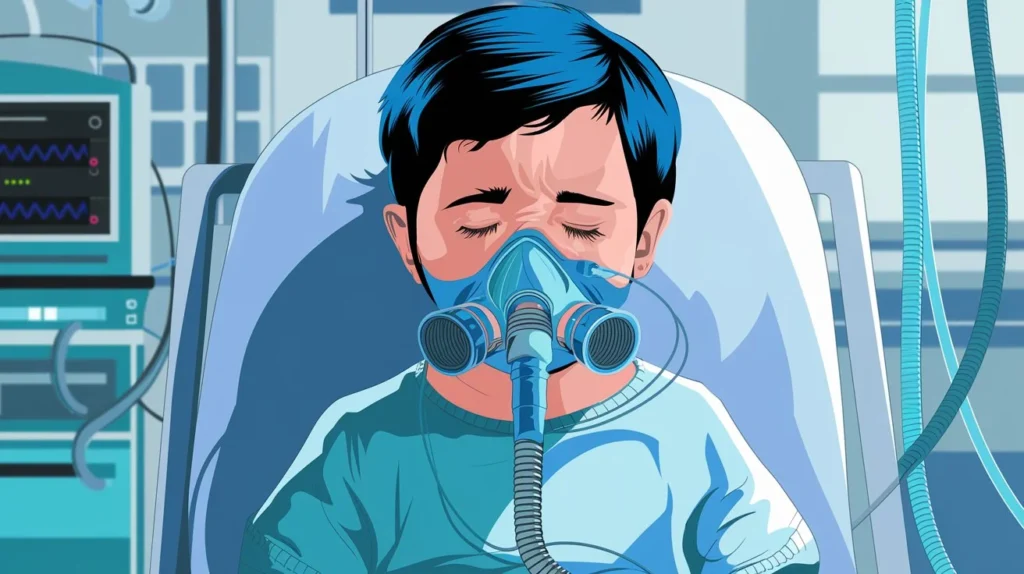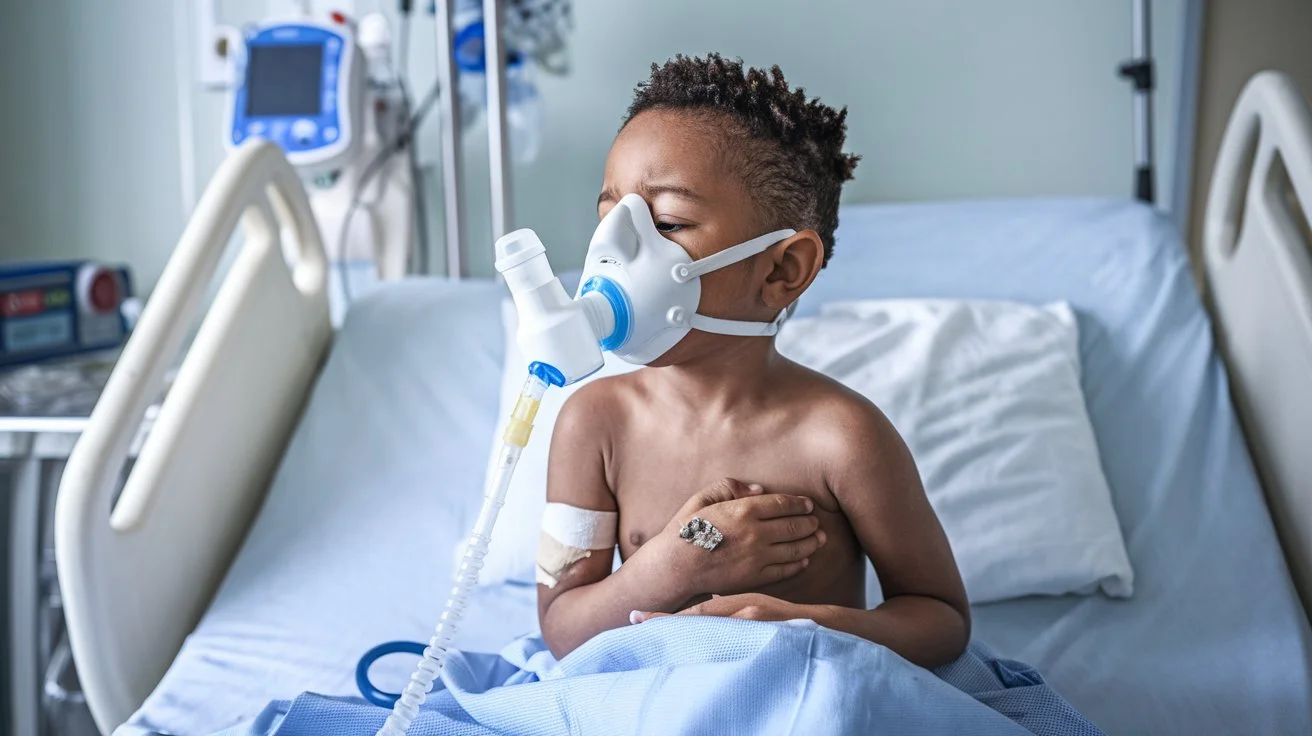Understanding Childhood Asthma
Childhood Asthma can be a challenging condition for families to manage, especially when trying to understand how it impacts young bodies differently than adults. This guide is designed to help you understand childhood asthma, its triggers, symptoms, and management options, backed by cognitive research to give you the most accurate and actionable information.
Table of Contents
What is Childhood Asthma?
Childhood asthma is a chronic condition affecting the airways in children’s lungs. These airways can become inflamed, narrow, or filled with excess mucus when triggered, making it difficult for a child to breathe. Unlike adults, children’s symptoms often vary, sometimes appearing as frequent coughing, especially at night or after physical activity.
Recognizing Early Signs and Symptoms
The signs of asthma in children often begin in infancy and evolve as they grow. While some children might outgrow symptoms, many will continue to manage them throughout their lives. Here’s what you need to look for:
| Common Symptoms | Frequency in Children |
|---|---|
| Wheezing or whistling | Frequently, especially with activity |
| Shortness of breath | Common during or after exercise |
| Persistent cough | Often worse at night |
| Tightness in chest | Variable, depending on severity |
Source: National Asthma Education Program, 2022
Triggers That Can Cause Asthma Symptoms in Children
Understanding what triggers symptoms is crucial to managing your child’s asthma effectively. Triggers can vary, and here are some common ones to watch for:
- Environmental allergens: Dust mites, pollen, mold, and animal dander are frequent allergens.
- Air pollution and tobacco smoke: Poor air quality is a significant factor that can worsen respiratory symptoms.
- Weather changes: Sudden temperature shifts can often make breathing harder.
- Infections: Respiratory infections like the common cold or flu can be more severe for children with asthma.
The Role of Cognitive Development in Asthma Perception
Research shows that children under seven often cannot clearly communicate when they’re having symptoms, which can delay treatment. Cognitive development plays a role in how children understand and describe symptoms like tightness in the chest or difficulty breathing. As children grow and develop better communication skills, they’re more likely to identify symptoms early, which aids in better management.
Diagnosing Asthma in Children
For children under age five, diagnosing asthma can be more challenging. Doctors often observe symptom patterns and use trial treatments to determine if symptoms improve. Here are some standard diagnostic tools for children aged six and above:
| Diagnostic Test | Purpose |
|---|---|
| Spirometry | Measures lung function and airflow obstruction |
| Exhaled nitric oxide test | Detects inflammation in the airways |
| Allergy testing | Identifies specific allergens that may trigger symptoms |
Source: American College of Allergy, Asthma, and Immunology, 2023
Treatment and Management Options
Managing asthma is a long-term commitment that involves medication, monitoring, and lifestyle changes. Here are the primary types of medication your child might be prescribed:

- Quick-relief (Rescue) inhalers: Used for immediate symptom relief, especially during an asthma attack.
- Controller medications: Often taken daily, these help reduce inflammation and prevent symptoms.
- Combination inhalers: Some children may benefit from an inhaler that combines both quick-relief and controller medication.
Medication Side Effects
While asthma medications are effective, you should be aware of possible side effects, especially with long-term use:
| Medication Type | Potential Side Effects |
|---|---|
| Inhaled corticosteroids | Oral thrush, sore throat |
| Long-acting beta-agonists | Increased heart rate, muscle tremors |
| Leukotriene modifiers | Headache, abdominal pain |
Consult your doctor if side effects persist or become bothersome.
Practical Tips for Parents: Helping Your Child Live with Asthma
Living with asthma doesn’t mean your child has to miss out on everyday activities. Here are some strategies to help manage it effectively:
- Encourage Open Communication: Teach your child how to recognize and communicate symptoms.
- Monitor Breathing Regularly: Check your child’s breathing with a peak flow meter to monitor daily lung function.
- Maintain Clean Indoor Air: Use air purifiers and minimize exposure to allergens.
- Exercise with Caution: With proper warm-up and cool-down routines, many children with asthma can still participate in physical activities.
Cognitive Research: How Children Respond to Asthma Management
Research in pediatric cognitive development shows that children are more receptive to asthma education if taught through engaging and age-appropriate methods. Simple visual aids, smartphone applications, and even games can help younger children understand their condition and learn how to use inhalers or peak flow meters effectively.
FAQ on Childhood Asthma
1. Can childhood asthma be cured?
Childhood asthma typically cannot be “cured,” but with effective management, many children can live symptom-free lives. Some children outgrow asthma, but it often persists into adulthood.
2. What is the best environment for a child with asthma?
A clean, allergen-free environment with good ventilation is best. Avoid exposure to tobacco smoke, pet dander, and mold to minimize asthma triggers.
3. Are asthma medications safe for children?
Yes, asthma medications prescribed for children are safe when used correctly under medical supervision. Always discuss any concerns with your child’s doctor.
4. How can I tell if my child’s asthma is worsening?
If you notice increased symptoms, difficulty breathing, or reduced peak flow readings, it’s essential to contact a healthcare provider. Frequent use of a rescue inhaler is also a sign that asthma may not be well-controlled.
Conclusion
Understanding childhood asthma and staying informed about its management can empower you as a parent to provide the best care for your child. Through a combination of lifestyle adjustments, medication, and ongoing communication, you can help your child live comfortably with asthma.
References
- National Asthma Education Program. (2022). “Managing Asthma: Guidelines for Families and Schools.”
- American College of Allergy, Asthma, and Immunology. (2023). “Childhood Asthma Diagnosis and Treatment.”
- Pediatric Cognitive Research Journal. (2023). “The Role of Cognitive Development in Chronic Illness Management in Children.”







